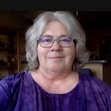On Writing a First Draft

I’m not writing much these days. A regular monthly newsletter and an occasional blog post. Social media posts. Emails. That’s about it for now.
I’m also not participating in NaNoWriMo, but that’s what I always think of in November. And that’s what inspired me to write this post. NaNoWriMo stands for National Novel Writing Month, and it’s not too late to sign up or create your own self-styled program. PRO TIP: It doesn’t have to be a novel! And it doesn’t have to be November!
All writers start with a first draft. Getting started can seem intimidating, but it doesn’t have to be. Here are some tips for you.
The sandbox analogyI might as well start with my favorite tip about first drafts, which will also explain the sandcastle image:
When writing a first draft, I have to remind myself constantly that I’m only shoveling sand into a box so later I can build castles.
— Shannon Hale
To me, that says it all. A box full of sand doesn’t look like much. But without it, you can’t build a beautiful sand castle!
My own advice about first draftsWhen it comes to writing stories about your photos and your family history — even if you don’t consider yourself to be a “real” writer — here’s a quote from my book What’s a Photo Without the Story? How to Create Your Family Legacy:
It doesn’t have to be perfect. In fact, let’s just assume right now that your stories won’t be perfect. But they will be a start. You don’t even have to know what you’re going to eventually do with them to get started. Just remind yourself you don’t have to show anyone if you don’t want to. Think of whatever you create as a first draft. (Even “real” writers start with first drafts!) If you don’t get it out of your head, and into a first draft, then there will be nothing for you (or others) to improve upon, right? And the stories will be lost.
— Hazel Thornton
If you are a perfectionistic writer — and who isn’t? — my blog post Letting Go of Perfectionism as a Writer addresses the following topics:
What if there’s a typo, or a grammatical error?LOL — I just noticed an error in this section of the blog post! I’m going to leave it there for you to find because I think it’s amusingly ironic that in three years I’ve never noticed, and no one’s ever pointed it out to me. Wait — yep, the error also appears in the Nonfiction Authors Association guest post version! Which goes to show that the world does not end if you make a mistake.What if my writing isn’t clear, or my tips motivational?What if all my concepts are not original and unique?What if I missed something?What if, what if, what if…..?Shitty first draftsMany writers use the phrase shitty first drafts, coined by author Anne Lamott. But some take exception to the language and the concept, like Lev Raphael in his post Anne Lamott Is Dead Wrong About First Drafts–And That’s Not All. Whatever.
Almost all good writing begins with terrible first efforts. You need to start somewhere. Start by getting something — anything — down on paper. A friend of mine says that the first draft is the down draft — you just get it down. The second draft is the up draft — you fix it up. You try to say what you have to say more accurately. And the third draft is the dental draft, where you check every tooth, to see if is loose or cramped or decayed, or even, God help us, healthy.
— Anne Lamott
Click here to watch (or just listen to) a 7:33 min YouTube reading (by someone else) of an excerpt — the shitty first drafts chapter — from Lamott’s classic book on writing, Bird by Bird.
Tips from some of my writing colleagues
Writing a first draft is very much like watching a polaroid develop. You can’t — and, in fact you’re not supposed to — know exactly what the picture is going to look like until it has finished developing.
— Anne Lamott
So, what comes next?
I give myself the freedom and permission with first drafts to be very drafty with lots of holes so my creativity has space to fill them in later.
First drafts are all about perseverance and finishing. It’s getting the ideas out of your head, discovering your story, until it comes into existence. THEN you’re able to edit (and edit!) until you can share it with others. But it all starts with a first draft.
Y’know the knock knock joke about the interrupting cow?
Knock Knock. Who’s there? The interrupting cow. The interrup… Moooooooooo!
That’s what I think about when approaching first drafts. My temptation to edit is so high that I constantly interrupt my creative approach. I have to remind myself that you can’t edit a blank page, and you can’t let the interrupting cow editor make you stray from your path. When I catch myself editing before I actually write, I tell myself, “Mooooooooo” to get back on track.
What comes after your first draft, but before handing your manuscript off to a professional editor for copy or line editing? Self-editing, of course. Here’s a tool to help you, written by another writing colleague, book coach Shawndra Holmberg:
Your First Draft is Complete, Now What?: Before you edit, check for these common errors.
Do you have a book in you? Or a blog post? Or a family/photo story?
Have you written your first draft?
What do think is holding you back?
Please share with us in the comments below!
______________________________________________________Hazel Thornton is an author, genealogist, and retired home and office organizer.Hung Jury: The Diary of a Menendez Juror What’s a Photo Without the Story? How to Create Your Family Legacy Go With the Flow! The Clutter Flow Chart Workbook Feel free to link directly to this post! Click here to ask about other uses.Copyright 2024 by Hazel Thornton, Organized for Life and Beyond
______________________________________________________________________________
The post On Writing a First Draft appeared first on Hazel Thornton.



